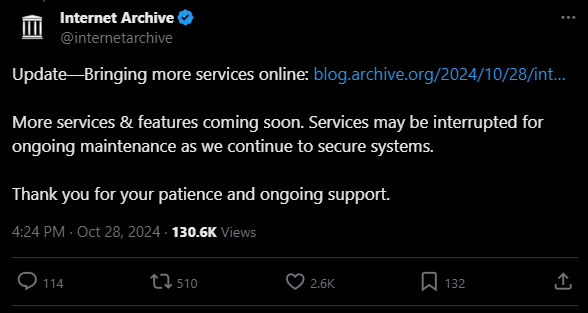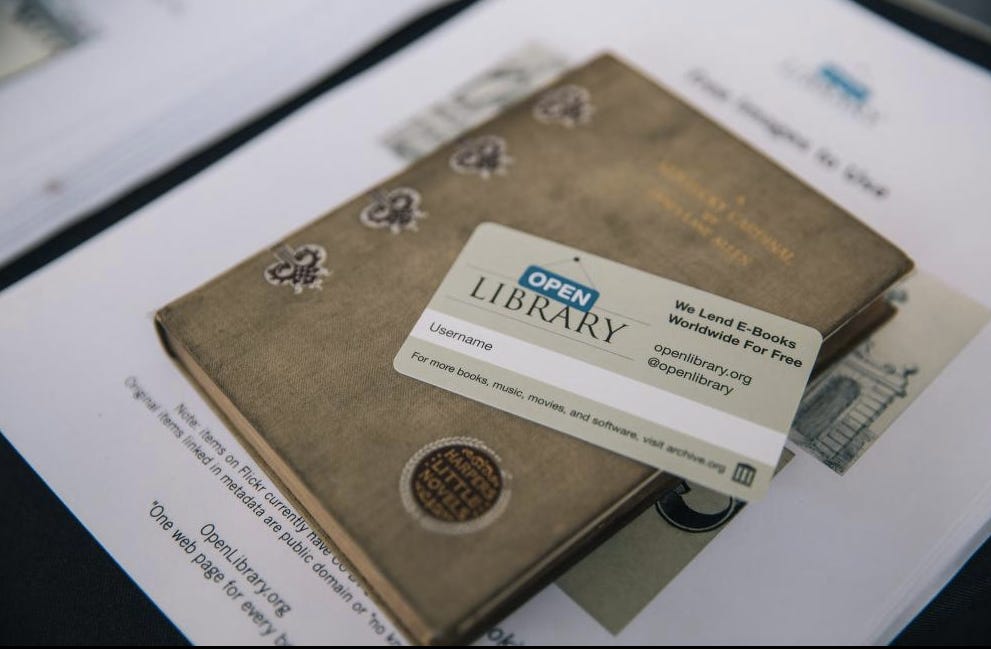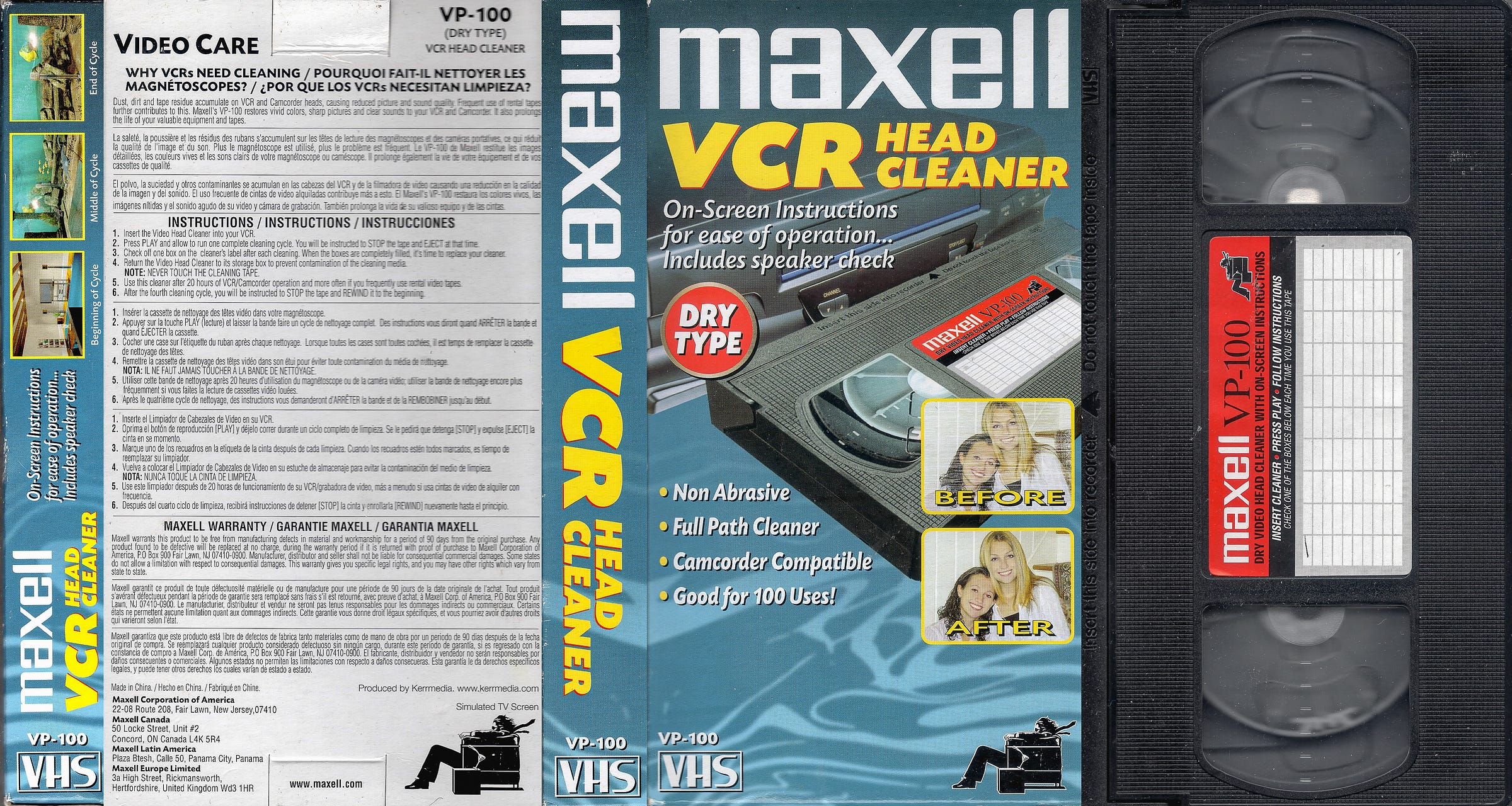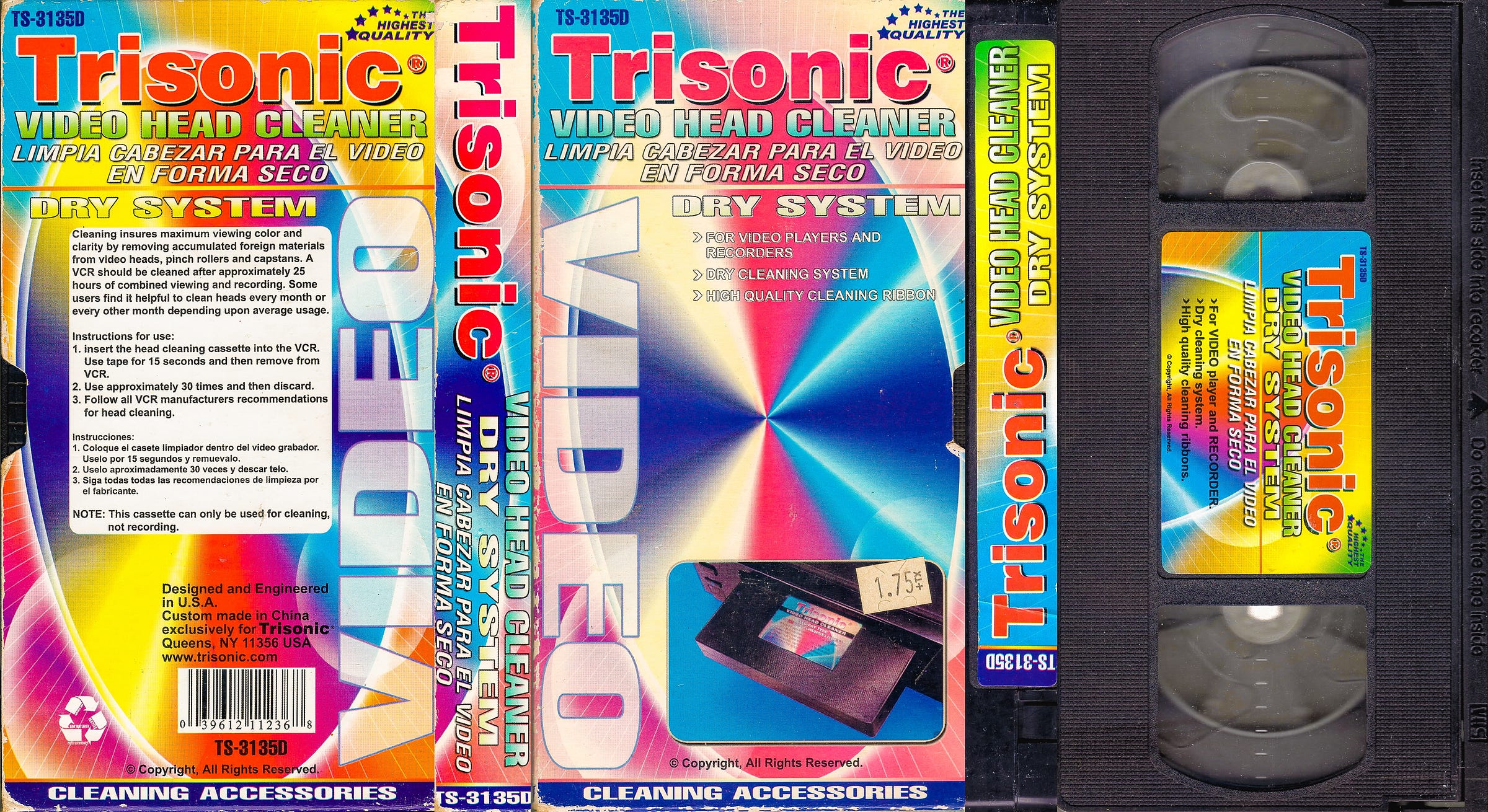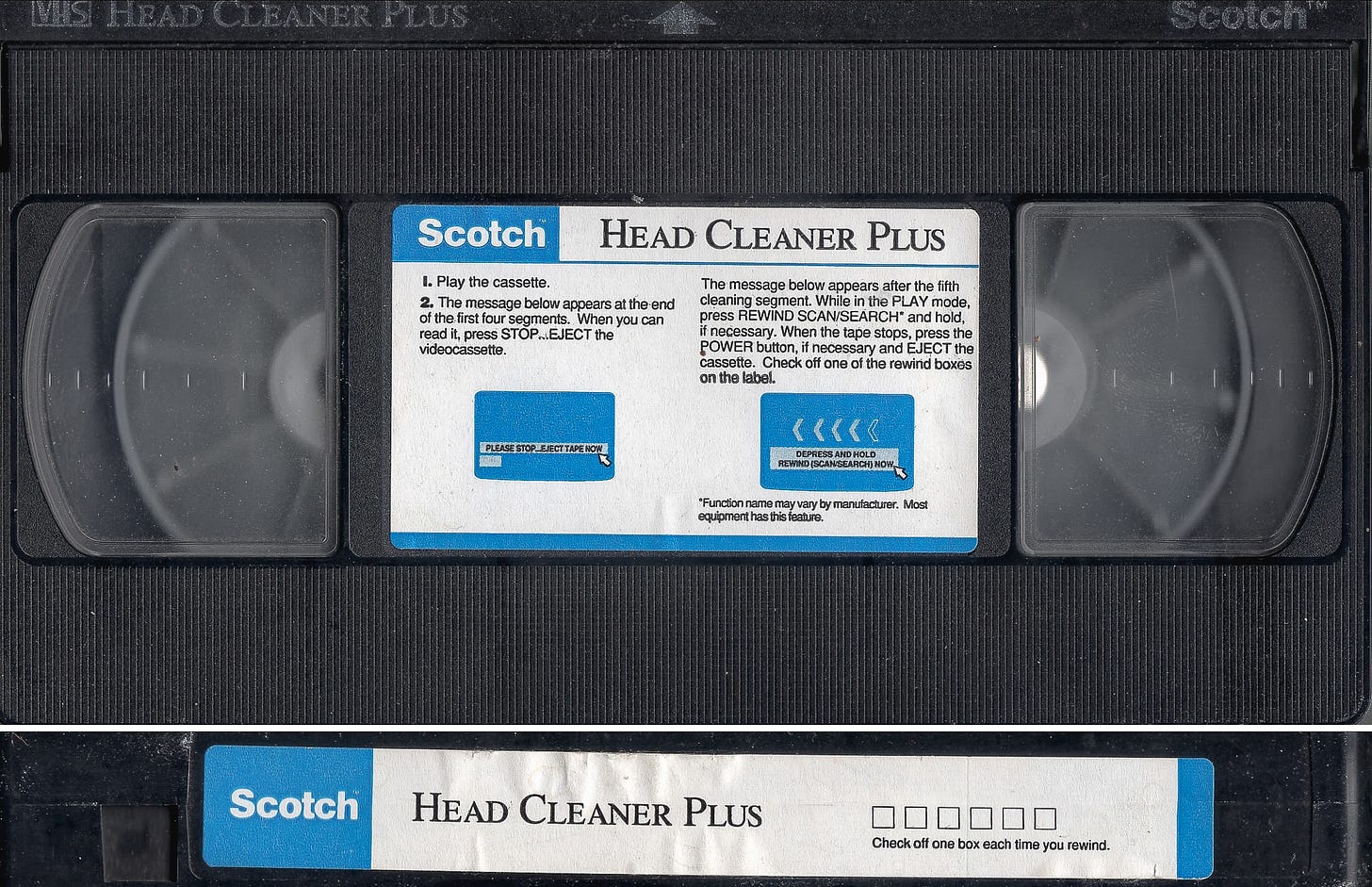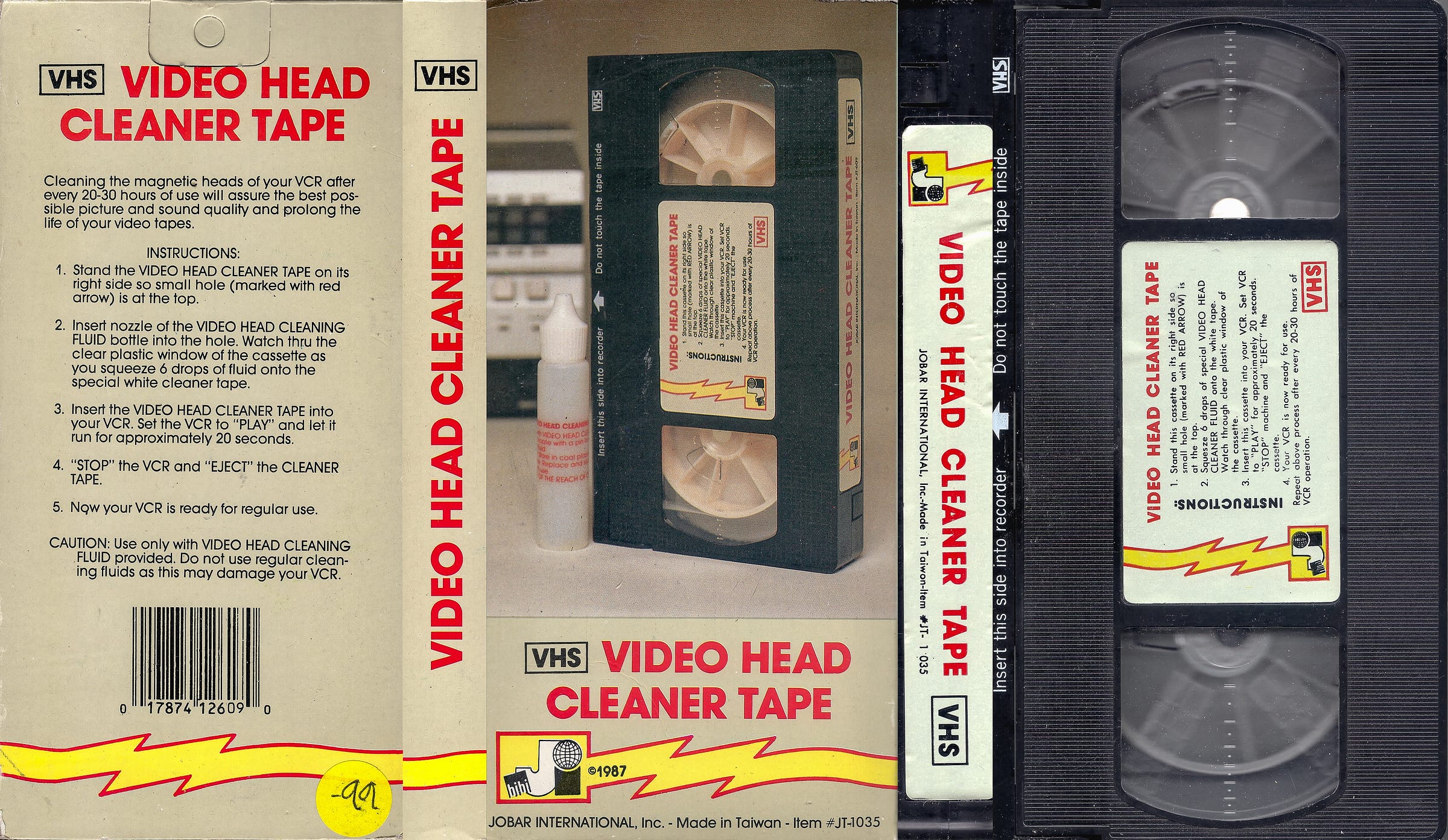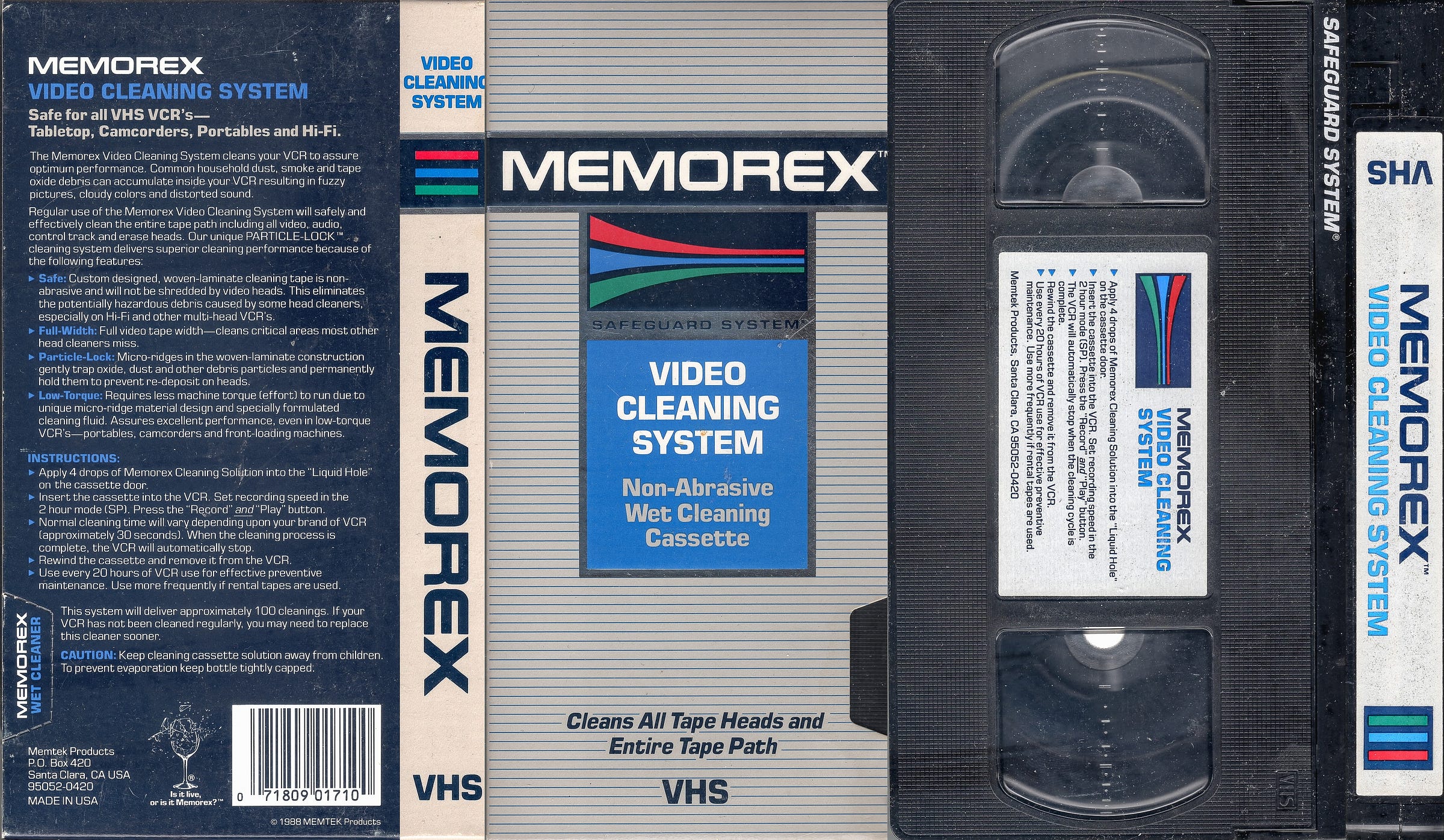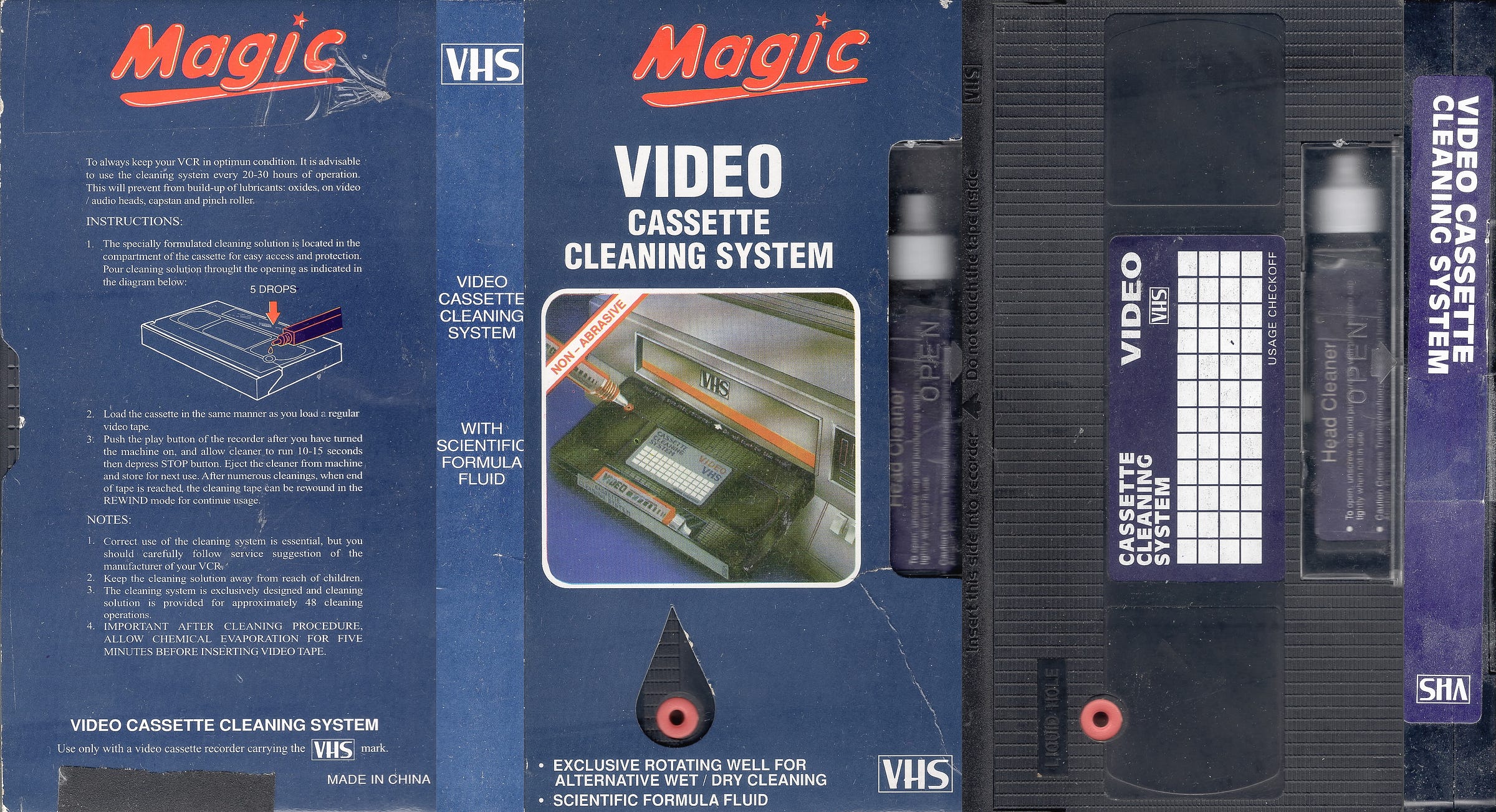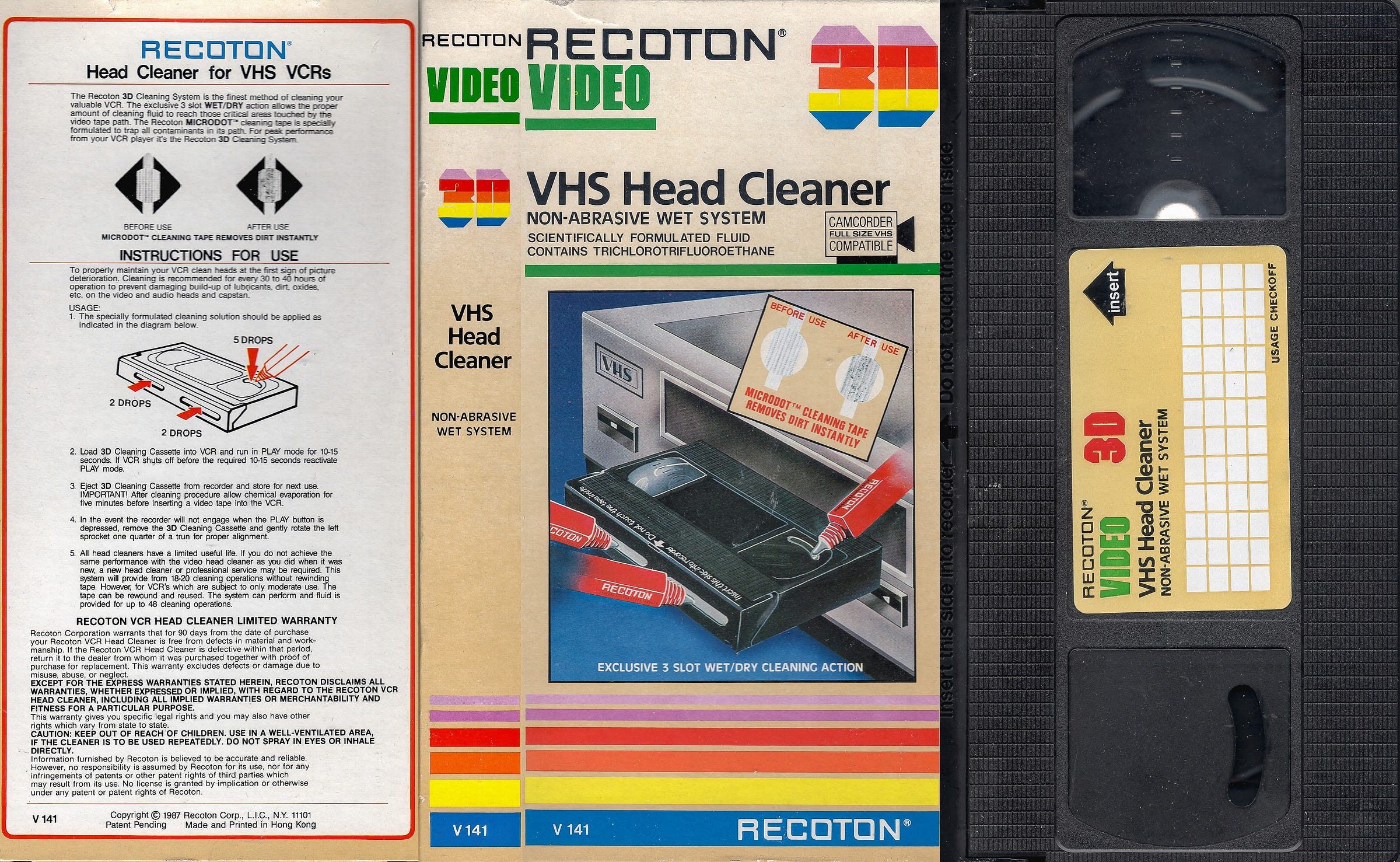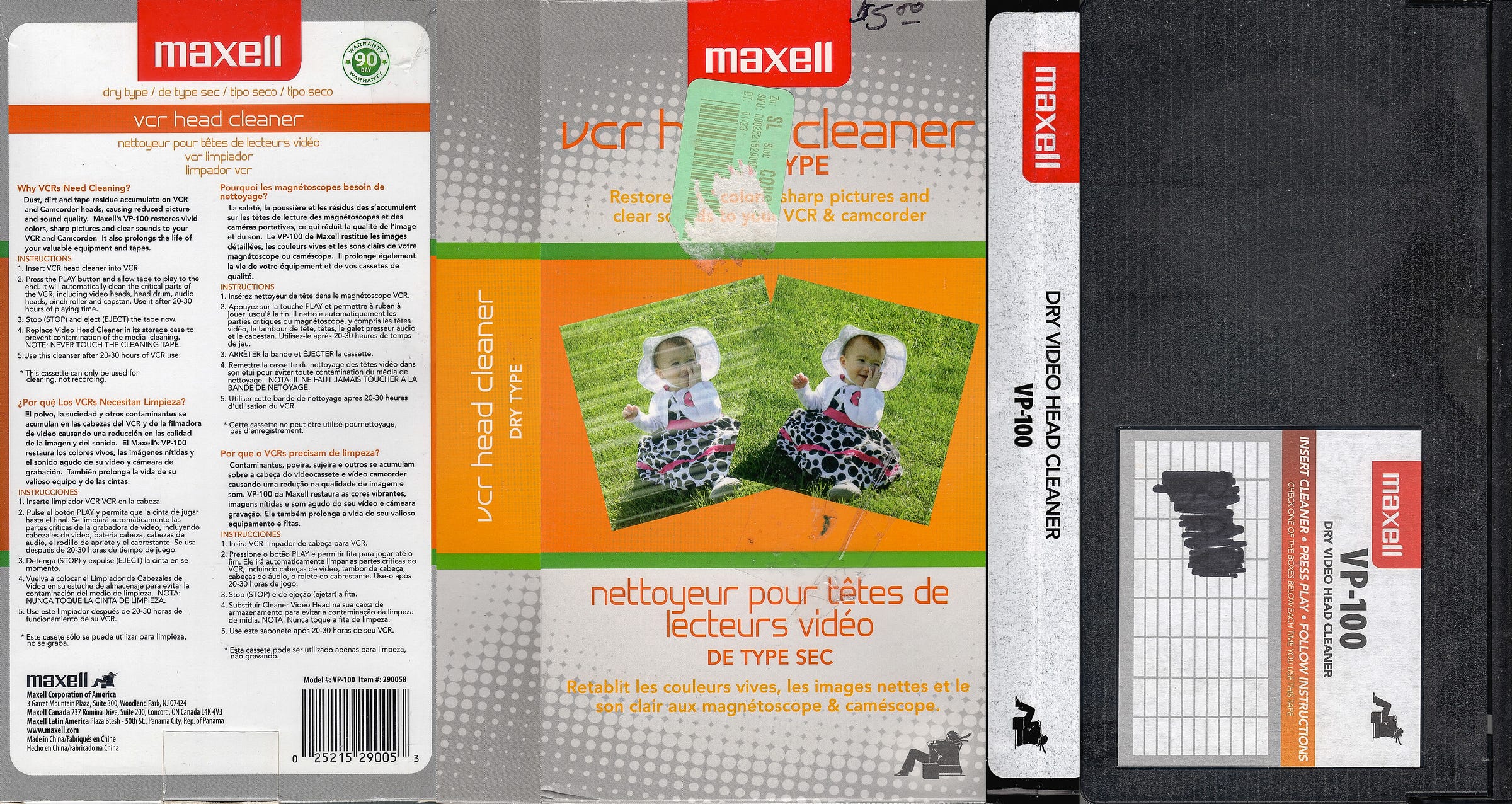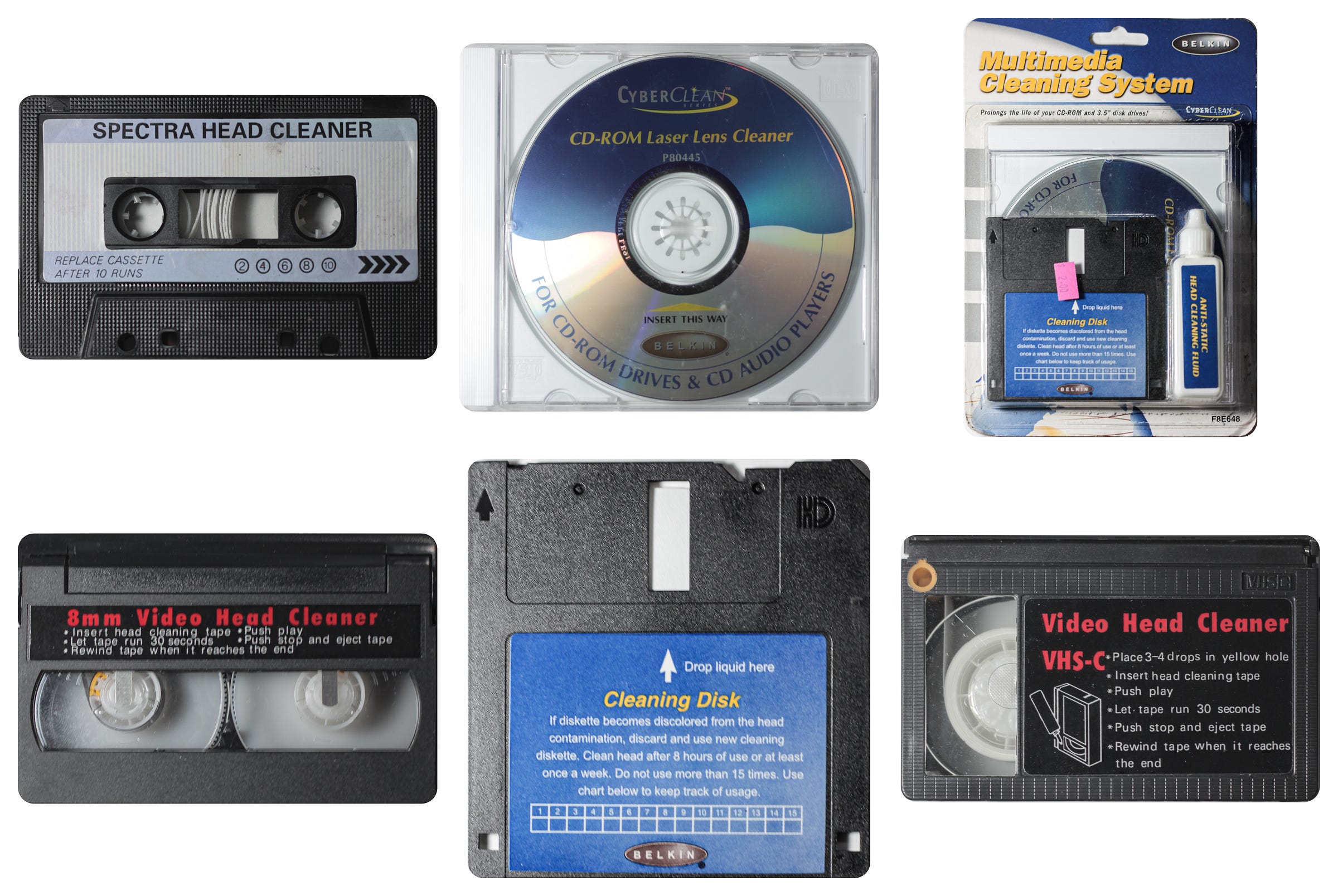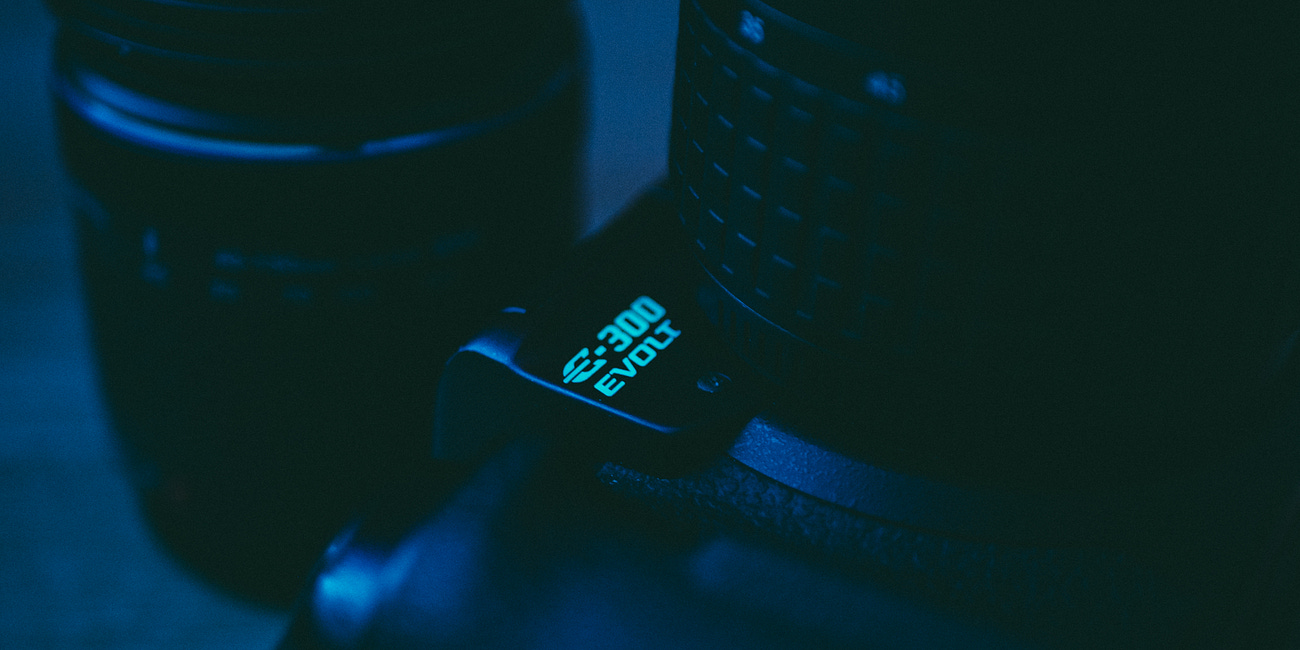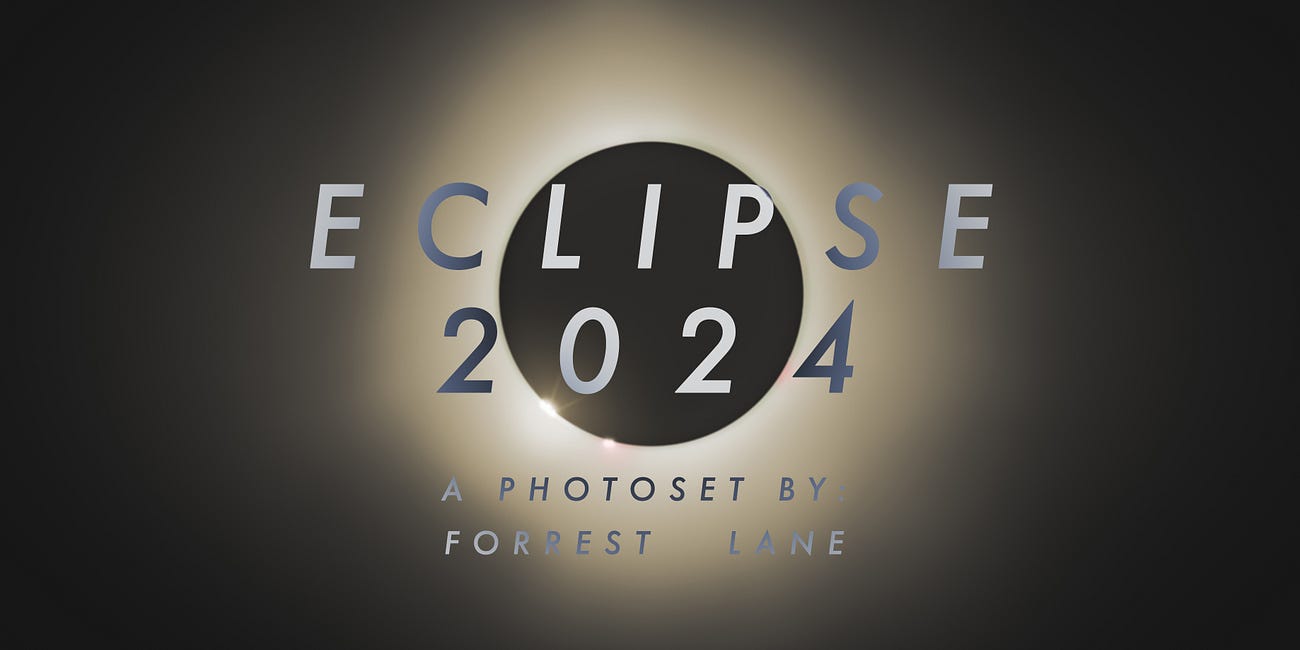Some Quick October Thoughts
and scanning some VHS head cleaner boxes
It’s been two weeks since I heard the news that Archive.org had been hacked, and things are looking much better. Practically every day there has been good news coming from their team, and as the days pass and all the functions and services of the website return to working order, I think it’s important for me to stay occupied with smaller projects for this blog that I’ve been putting off.
Currently it is the early hours of October 30th, and uploading to Archive is still unavailable. I went in to great detail (for me) about the attack and subsequent hacks in my previous post, but through various members of the team that run Archive.org, The Wayback Machine, Open Library, and all their other services, we have constantly reassured the public that the site will function as normal again in the near future and will be more secure than ever.
Thankfully, the team has informed us that all the data that has been uploaded through their services is completely safe. No files have disappeared. And while video playback isn’t available at the moment, looking at my own log of videos, everything is still there. Not a single dull travel doc has been harmed in this cyberattack.
The Most Important Library
...Many have conflated this to the burning of the Library of Alexandria, and I don’t think anyone is wrong to think that, the toughest part for me to grasp is the why. Why would an internet library be treated differently from a brick and mortar library? Sure, it’s obvious what the reason is (money), but for all the marketing copy I am bombarded with on a daily basis about how streaming services are so much more convenient than physical media, why would library’s of all things meet opposition at every step along the way towards making the ease of convenience and search-ability their number one priority...
While I wait for the login, upload, and video playback functions to be restored on Archive.org so that I can resume the normal content here, I’ve prepared a couple special pieces of content for this week and the weeks ahead.
For this week, I’ve got a round up of all my VCR head cleaner tapes, including two interesting 3M / Scotch branded dry-type tapes, both with some very futuristic graphics as the tape clears the heads of the VCR of debris. After that I’ve got another single-tape highlight style post with a very interesting thrift store pickup. I’ll upload this one directly to Substack initially, but it will arrive on Archive.org once I’m about to. And after that I plan on doing a big wrap up of local shows I’ve been to lately (I have been to so many shows).
In all, things around here wont be too different. I know some of my readers expect a certain amount of this kind of content or that kind of content, but whether I like it or not, sometimes it’s nice to take a break from 1980s nature documentaries for awhile, though hopefully not for long. And, when Archive.org is back to functioning normally, I have something very special planned (especially if you like nature docs)!
VCR HEAD CLEANER BOX SCANS
While rare, anytime I come across a VCR head cleaner tape, I pick it up. They are usually priced just like normal VHS tapes at thrift and secondhand stores, and I’ve become quite enamored with the box art on many of them.
I do own two 13” VCR combo televisions, both of which have the VCR portion at the bottom. Servicing the heads of these units using the typical protocol for a standard VCR is extremely difficult and moderately dangerous. All CRT televisions have a high voltage circuit on the back, and removing any cover can expose boards, bare wires, and capacitors that would be not very fun to touch. My general rule for any CRT television is that I wont attempt any sort of internal repair on them for this reason. I do value my life after all.
So for me, these head cleaner tapes do serve a function. For the two combo units, I will typically use a wet-type head cleaner when I notice any sort of tracking issues. This type is mostly non-abrasive, being a standard VHS cassette with the magnetic tape swapped out for a thin piece of nylon or Tyvek ®. There is usually a opening somewhere on the tape to put a few drops of 90%+ alcohol through which will distribute the cleaning fluid onto the material. This will pass over the heads inside the VCR just as if it was playing a tape normally, and remove any dust, gunk, or magnetic shedding off the heads of the VCR, allowing them to track and display the image of a tape clearly.
I’ve also found them to be pretty convenient versus taking a few screws loose from the back of a VCR and pulling the metal shroud off to clean the heads with a swab and some alcohol, though it is much safer for the VCR if this is done by hand. I’ve never personally had any issues with the units I’ve cleaned with head cleaner tapes, but I do tend to stay away from running the dry-type cleaner tapes through any machines I care a lot about.
These work a little differently. In place of the nylon or Tyvek ® on the spools of the cassette, a slightly abrasive material is used to rub against the heads of the VCR to clear any unwanted particles out of it. Because of this, the slightly abrasive material does come in direct contact with the heads of the VCR, which means that eventually this could wear them down to the point that the unit wouldn’t be able to function properly anymore.
The upside of these dry-types is that the slightly abrasive material is adhered to the normal magnetic tape found in a VHS cassette. This means that the manufacturers of these head cleaners can put instructions or audio tests on the tape that play while it cleans. I’ve included two videos in this post showcasing the ones I’ve come across with this added feature, both from Scotch / 3M.
I have always found blank VHS tapes to have a really interesting amount of diversity in the art chosen to represent how cool and futuristic home video was at the time, but in the world of VCR head cleaners, I think there’s even more to love. Some look like 70s magazine ads, others look like the year 2050. Many have interesting box dimensions due to needing to include cleaning fluid. There’s just a whole lot going on with the physical design of the cassettes and their packaging and I think they are a lot of fun!
Real quick before I go, I just wanted to show a a few other cleaners I’ve managed to pick up over the years for several different formats. Like with some of the VCR head cleaners, I don’t have the original packaging for all of them, but I have used all of these and they have worked great when I needed them. I digitize all sorts of formats for this blog but also professionally and in order to keep all my playback cameras, floppy drives, cassette decks, etc running perfectly I have found these to be immensely helpful.
This pretty much covers any format I’ve needed to digitize, and covers basically all the equipment I have on hand to do that job. Digital 8mm / Video8 / Hi8, VHS-C, Mini-DV, CD / DVD, floppy disk, audio cassette, and VHS.
Well, that’s the collection! I hope you enjoyed this quick update! If you’re looking for more, please check out my Youtube channel while Archive.org is down temporarily. If you have any questions, feel free to send me a message right here or drop a comment below. If you haven’t already, please check out the one of my previous posts below, or all of my other previous posts here. Thanks so much for checking out this week’s edition of Diptych!
See you soon!
—Forrest



